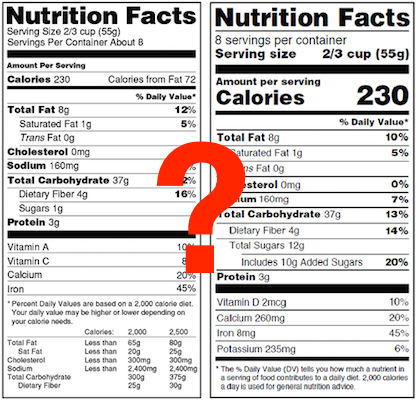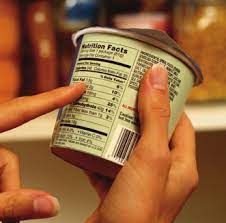How to do a Database Nutritional Analysis Right
As we've discussed before, database nutritional analysis is a great low-cost alternative to lab analysis and can even be more accurate in the long run. However, for it to be used as a viable option and to deliver on that accuracy, it has to be done right. In this post we'll go over exactly how to do that using ReciPal. If you prefer a more visual approach, we have several instructional videos for using our nutritional analysis software, which are a good supplement to this guide.
Have Your Recipe Ready
This should go without saying, but you need to have a detailed recipe for your product, including all ingredients, amounts, and cooking processes.
Get Ingredient Data From Your Suppliers (If Needed)
Obtaining accurate data is usually the most time consuming process of a proper database analysis.
Most (and ideally all) ingredients in your recipe will be found when you search our database. However, some will not. When you can't find something, the best thing to do is ask your supplier for ingredient specification sheets. These will typically include unrounded data for a 100 gram sample of the ingredient. Once you have all your spec sheets, check each one to make sure:
- The data is unrounded
- Data exists for each nutrient you need (for example, if you are making a nutrient claim for Potassium, you need data for Potassium). If the data isn't available, you can go back to your supplier for more information, or estimate values based on the data for similar ingredients (another brand of the same product, for example).
- The data passes your high level "sense check" (calories add up based on 4-4-9 formula - 4 calories/gram of carbohydrate and protein, 9 calories/gram of fat)
- The data passes a lower level "sense check" (carbohydrate components add up to total carbohydrates, and same with fat components)
Once you have all your ingredient data, enter it into our database so you can use it in your recipes.
It is important to note that using data from a calorie counting website or a food label is not ideal. For one, this data may not be correct, either because it was entered incorrectly, or if the analysis was not done properly. Secondly, this data is already rounded, which reduces accuracy.
Add Ingredients to Your Recipe
Once all your ingredients are in the database, search for each ingredient and add the appropriate one.
Edit the Amount of Each Ingredient
At this point you've added each ingredient to your recipe. Now you have to set the proper amount of each ingredient, whether it's 1 cup of flour or 2 tablespoons of honey.
Be careful with ingredients such as marinades, batters, breadings. You'll want to weigh these before and after to make sure you only include the amount that is actually used. For example, your recipe may call for 2 cups of marinade so you make 2 cups of marinade. However, the entire 2 cups of marinade are probably not ending up in your food - there will be some marinade left over that isn't absorbed. So make sure your recipe includes the proper amount.
Enter the Recipe Yield and Serving Information
We're almost done! At this point we've added all our ingredients and their amounts. Now we have to specify how much we made on a per serving basis. Your recipe probably makes more than one serving and also more than one package of your product, so enter:
- How many packages this recipe makes
- How many servings are in a package
- What the total yield of the recipe is in grams
We use all this information to calculate the proper nutritional information per serving. The total yield takes into account moisture content lost in the cooking process so that each serving is shown as the correct weight. Note that you'll have to repeat this step if you have multiple package sizes.
Sense Check Your Label
At this point you've done all the hard work. Our nutrition label software will automatically calculate the nutritional information, create the label using the proper format and apply the appropriate FDA rounding rules for each nutrient.
Once you have your label you should make sure it makes sense. Is the data what you would expect? Is the data close to similar products made by other companies? It won't be exactly the same, but it should certainly be in the same ballpark. It can also help to show a friend or colleague and make sure it passes their sense check as well.
Next Steps
Once you are happy with your nutritional analysis, you'll want to pick the right label. We'll have another post soon describing how to pick the right type of label and the options for each label type. Lastly, you'll probably want to work with your designer or packaging folks to add your nutrition facts to the rest of your label so the whole world can see the fruits of your hard work!






